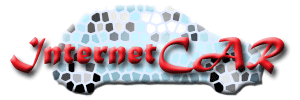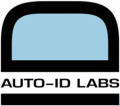 DVTS (Digital Video Transport System) DVTS (Digital Video Transport System) | |
| Abstract | DVTS project has developed High-quality video streaming system, quality adapted streaming system and multicast technology. Typical our projects are DVTS and HDVTS. Our projects has been testing on the Internet, demonstrated and operated on the Internet. We have worked together with WIDE project, DVTS consortium, Internet 2, academic-industrial cooperation, and so on. |
| Members | Kazunori Sugiura, Hitoshi Asaeda, Hisamatsu Tsuyoshi, Katsuhiro Horiba, Kazuhiro Mishima, Kazuhisa Matsuzono, Takashi Tomine |
| Related Papers | |
| Web Pages |
DVTS Project [ http://www.dvts.jp/ ] |
| Related Softwares | DVTS [ http://www.sfc.wide.ad.jp/DVTS ] |
 Open Wireless Broadband Lab Open Wireless Broadband Lab | |
| Abstract |
Our laboratory will focus on merging the internet and wireless
networks by conducting technical and society-oriented research, development,
and proposals for new applications and business models using wireless networks. |
| Members | Jun Murai, Osamu Nakamura, Ryuji Wakikawa, Noriyuki Shigechika, Jin Mitsugi |
| Web Pages | |
 SOI (School on the Internet Project) SOI (School on the Internet Project) | |
| Abstract | SOI (School on the Internet) Working Group in WIDE Project was started in September 1997, considering the change of role in the Internet. Our goal is "to provide higher education and opportunity for all the people in the world who have the will to study using Internet based technologies, eliminating traditional limitations." In October of the same year, we have started WIDE University "School of Internet" as a testbed of our new concept. Since then, we have been doing researches such as education based on the Internet, development of the university environment, and research about the education system of the new age. |
| Members | Keiko Okawa, Achmad Husni Thamrin, Shoko Mikawa, Noriatsu Kudo |
| Related Papers | |
| Web Pages | |
 SOI-Asia SOI-Asia | |
| Abstract | SOI ASIA Project is distance education project using satellite Internet in Asia, which proposes a new educational methodology for universities in Japan as well as educational institutions abroad. We have been conducting classes and organizing events in many fields, such as information technology, computer science, marine science, and disaster management. As of September 2007, this project has 27 universities and research institutes partners in 13 countries in Asia, and has deployed receive-only satellite earth stations at each partner site to share the distribution of live lectures from Japan as well as archived lectures. |
| Members | Keiko Okawa, Achmad Husni Thamrin, Kotaro Kataoka, Shoko Mikawa, Noriatsu Kudo, Achmad Basuki |
| Related Papers | |
| Web Pages | |
 Internet CAR Project (iCAR) Internet CAR Project (iCAR) | |
| Abstract | Now, the Intelligent Transport Systems (ITS) attracts
many people's concern. ITS is the general term of the field which considers a car, a man, and a road as o
ne system, and builds an efficient road traffic system. Various things, such as Car Navigation, Vehicle
Information and Communication System (VICS), Electronic Toll Collection System (ETC) are positioned in ITS. |
| Members | Jun Murai, Keisuke Uehara, Masaaki Satoh, Jean Lorchat, Koshiro Mitsuya, Yuichi Nakamura, Masataka Nojo, Yu Ukai, Dan Sawada |
| Related Papers | |
| Web Pages | InternetCAR [ http://www.icar.wide.ad.jp/ ] |
| Related Softwares | SHISA [ http://www.mobileip.jp/ ] |
 AI3 (Asian Internet Interconnection Initiatives) AI3 (Asian Internet Interconnection Initiatives) | |
| Abstract | AI3 project conducts research and development activity
in networking technologies and human resource development using satellite links as data link of the Internet.
This project operates a wide-area testbed network connecting 29 research and academic organizations in
13 Asian countries. |
| Members | Achmad Husni Thamrin, Haruhito Watanabe, Kotaro Kataoka, Mohamad Dikshie Fauzie, Achmad Basuki |
| Related Papers |
- Kotaro Kataoka, Achmad Husni Thamrin, Kenjiro Cho, Jun Takei, Jun Murai.
Architecture of Satellite Internet for Asia-wide Digital Communications.
AINTEC2007. Phuket, Thailand. November 2007. |
| Web Pages | AI3 Project [ http://www.ai3.net/ ] |
 Auto-ID Auto-ID | |
| Abstract |
People in AutoID are working for "Internet of things" which is a
combination of Internet and automatic identification technologies such
as RFID and bar-code. |
| Members |
Jun Murai, Osamu Nakamura, Jin Mitsugi, Hisakazu Hada, Shigeya Suzuki, Masafumi Nakane, Tatsuya Inaba, Osamu Tokumasu, Yuusuke Kawakita, Kosuke Osaka, Akira Yamamoto, Naoyasu Kamiya, |
| Related Papers | |
| Web Pages | Auto-ID Lab, Keio [ http://www.autoidlab.jp/ ] |
| Abstract | |
| Members | Jun Murai, Ryuji Wakikawa, Yoshifumi Nishida, Hideaki Yoshifuji, Mitsunobu Kunishi, Masaaki Sato, Rodney D. Van Meter, Kazunori Sugiura, Koji Okada, Keisuke Muda |
| Related Papers | |
 Aqua : Advancing Quantum Architecture Aqua : Advancing Quantum Architecture | |
| Abstract | The AQUA group is researching system organizations, circuit structures and algorithms to accelerate the development of large-scale quantum computers. |
| Members | Rodney D. Van Meter |
| Related Papers | |
| Web Pages | Aqua [ http://www.sfc.wide.ad.jp/aqua/ ] |
  CNRS-WIDE CNRS-WIDE | |
| Abstract |
WIDE and CNRS has launched collaboration of mobility and measurement
topics. This project is supported by French and Japanese government
and will continue for two years. We exchange researcher, research
information, technical results between two countries. |
| Members | |
| Related Papers | |
| Web Pages | CNRS-WIDE [ http://cnrs.wide.ad.jp/ ] |